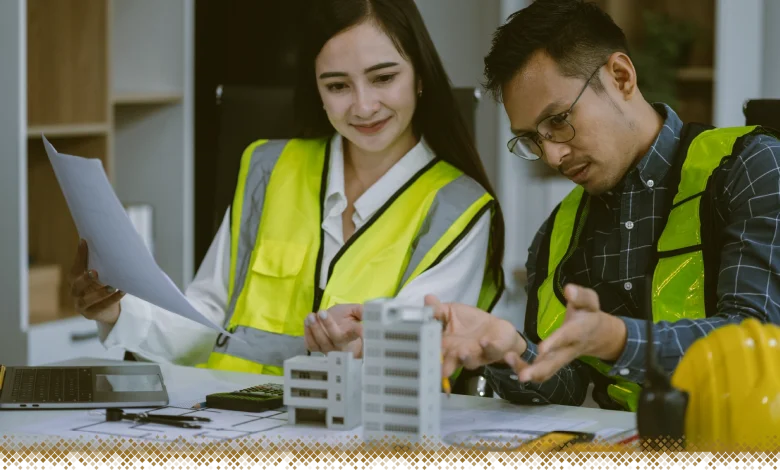
The Invisible Architecture of Our Daily Lives
When you walk into an office tower in Raffles Place at 8am, the lights are already on, the air is cool, the lifts are waiting. This is facilities management Singapore at work, though you would never know it. By the time most of us arrive, an entire world of labor has already unfolded. Security guards have completed their rounds. Cleaners have polished the lobbies. Technicians have checked the building’s vital signs. This is the hidden choreography that makes Singapore’s built environment function, and it reveals something profound about how our city actually works.
The People Behind the Systems
I spent time observing the operations of several commercial buildings across Singapore, and what struck me most was not the technology but the people. The facility manager who arrives at 6am to ensure everything is ready. The maintenance technician who knows the building’s quirks better than anyone. The cleaning supervisor coordinating a team of workers who move through offices like ghosts, arriving before dawn and finishing before most tenants appear.
These are the people who make facilities management in Singapore possible, yet their work is designed to be invisible. When they succeed, no one notices. When something goes wrong, everyone does. It is a peculiar form of labor, one that exists in the margins of our awareness, yet without it, the entire edifice of modern commerce would grind to a halt.
Consider the economics of this invisibility. Building owners and tenants pay substantial fees for facility management services, but the workers who actually perform this labor often earn modest wages. This is not unique to Singapore, but it is particularly stark here, where gleaming towers and world-class infrastructure mask the economic disparities beneath.
The Weight of Compliance
Singapore’s regulatory environment for building management is among the strictest in the world. The Building and Construction Authority mandates rigorous standards. Fire safety inspections. Lift maintenance schedules. Air quality monitoring. Energy audits. The list goes on.
According to the Building and Construction Authority, “building owners must ensure regular maintenance and inspection of essential building services and systems to safeguard public safety and comply with regulatory requirements.” This statement, bureaucratic as it sounds, translates into thousands of hours of labor each year.
For facility managers in Singapore, compliance is not just a checklist but a constant pressure. The regulations are necessary, certainly. They keep buildings safe. But they also create an environment where facilities management Singapore operates under perpetual scrutiny, where a missed inspection or overlooked detail can result in penalties or, worse, tragedy.
The Climate Factor
Singapore’s tropical climate makes building management uniquely challenging. The heat is relentless. The humidity corrodes. The rain, when it comes, comes hard. Air conditioning systems work overtime, consuming vast amounts of energy. Cooling a building here costs far more than in temperate climates.
This environmental reality shapes every aspect of facilities management in Singapore:
- Cooling systems require constant monitoring and maintenance to prevent failures during peak heat
- Humidity control becomes critical to prevent mould growth and protect equipment
- Waterproofing demands regular inspection, as tropical downpours test every seal and joint
- Pest control takes on added urgency in the warm, humid environment
- Energy costs dominate operating budgets, driving constant efficiency improvements
The Building and Construction Authority notes that “air-conditioning typically accounts for 60 per cent of a commercial building’s energy consumption in Singapore’s tropical climate.” This single statistic illuminates the scale of the challenge facing facility managers here.
The Social Contract
There is an unspoken agreement at the heart of facilities management singapore. Building owners pay for services. Tenants expect flawless environments. Workers provide their labor. Managers coordinate it all. Everyone benefits, though not equally.
Walk through the service corridors of any major building and you will see a different world from the polished lobbies. These are functional spaces, utilitarian, where the machinery of building management lives. Here, you will find the workers who keep everything running, often migrants from other countries, earning their livelihoods in the shadows of Singapore’s prosperity.
This is not meant as criticism but as observation. Every modern city depends on this hidden labor. But in Singapore, with its emphasis on efficiency and perfection, the contrast between visible and invisible, between served and server, feels particularly acute.
The Technology Promise
The facilities management industry in Singapore increasingly turns to technology for solutions. Smart building systems. Internet of Things sensors. Predictive maintenance algorithms. These innovations promise to reduce costs, improve efficiency, and catch problems before they escalate.
Yet technology does not eliminate the need for human judgment and human labor. Someone still needs to respond when a sensor triggers an alert. Someone still needs to clean, to repair, to manage. Technology changes the nature of the work but does not make it disappear.
A City That Functions
Singapore works because of systems like these. The trains run on time. The buildings stay cool. The lights stay on. This reliability, this seamless functionality, is not accidental. It is the result of countless hours of labor, planning, and coordination.
Facilities management Singapore is, in this sense, a microcosm of Singapore itself: efficient, regulated, invisible until it fails, and dependent on a hidden workforce that makes everything else possible. Understanding this system means understanding something essential about how modern cities actually function, and who pays the price for that functionality through facilities management singapore.





